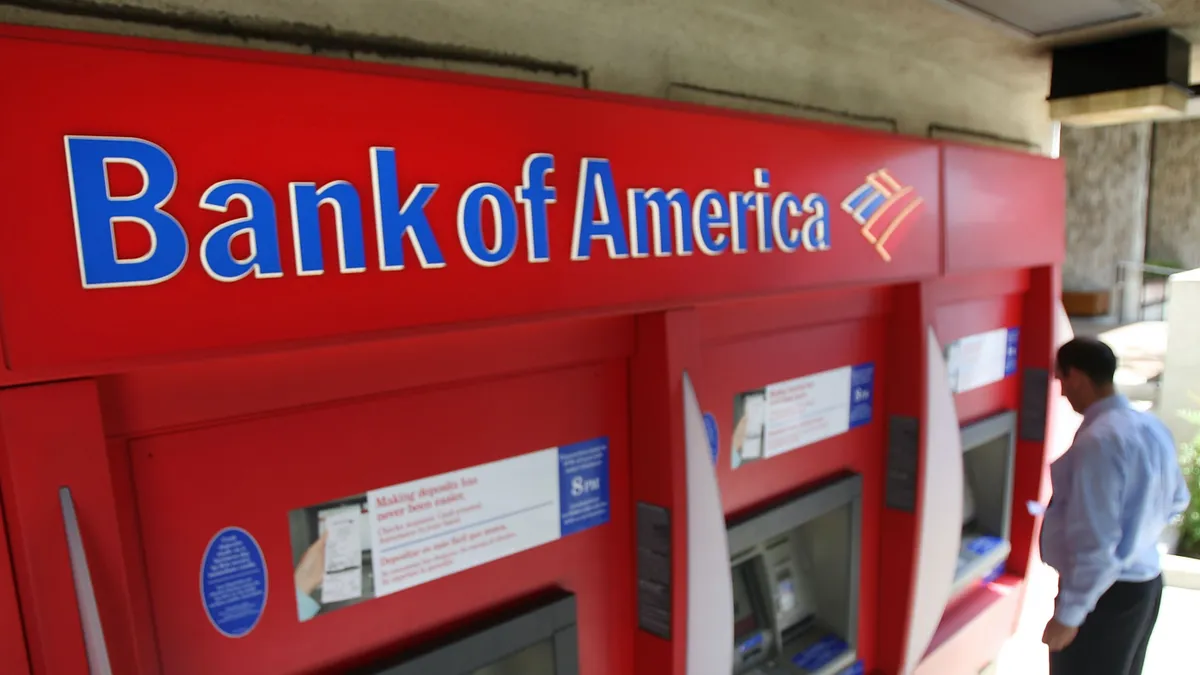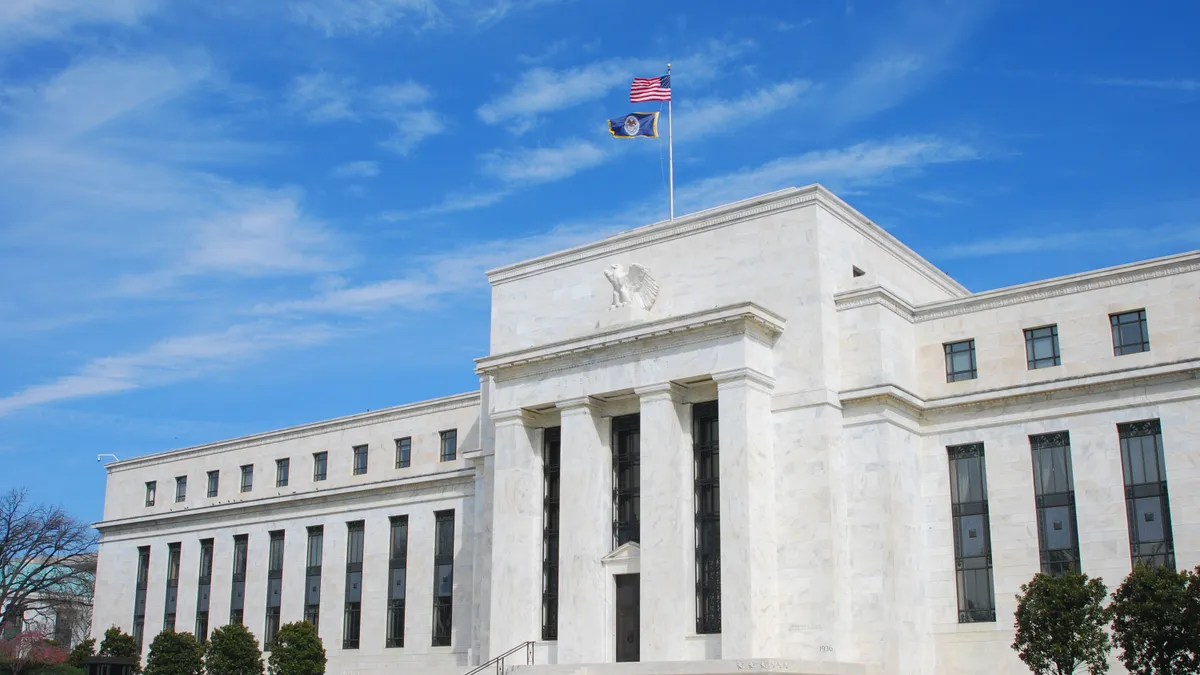Dive Brief:
- Bank of America plans to reduce overdraft fees from $35 to $10 beginning in May, according to a press release Tuesday. It will also eliminate non-sufficient fund (NSF) fees next month and certain transfer fees in May.
- Wells Fargo later in the day said it would eliminate NSF fees and transfer fees for certain customers in the first quarter of 2022. The bank also said it plans to provide a 24-hour grace period, starting in the third quarter, for customers to cover an overdraft before incurring a fee.
- These moves away from overdraft “increase choices and flexibility and, as a result, will bring more people into the mainstream banking system and away from higher-cost options outside of it,” said Marc Morial, president of the National Urban League and a member of Wells Fargo's Banking Inclusion Initiative Task Force.
Dive Insight:
By pivoting away from overdraft and related fees, Bank of America and Wells Fargo are building on a larger trend in which banks are committing to rely less on overdraft and other fees.
Capital One said last month it would eliminate overdraft fees by early 2022 for consumer-banking customers, becoming the largest U.S. bank to do so.
Ally Bank and Alliant Credit Union eliminated overdraft fees in 2021.
The announcements by Bank of America and Wells Fargo — the U.S.'s second- and fourth-largest banks, respectively — come weeks after the Consumer Financial Protection Bureau (CFPB) indicated the agency will adopt a harsher stance on banks overly reliant on overdraft fees.
Bank of America said it would remove clients’ ability to overdraw their accounts at ATMs in February.
In addition to its planned May reduction in overdraft fees, the bank said it would eliminate the $12-per-transaction overdraft protection transfer fee on its Balance Connect accounts.
“We remain committed to taking actions that will further bring down overdraft fees in the future and continue to empower clients to drive positive changes to behavior pertaining to overdraft,” said Holly O’Neill, Bank of America's president of retail banking.
Once these changes are implemented, Bank of America will have slashed overdraft fee revenue by 97% from 2009, the Charlotte, North Carolina-based lender said in its release.
Wells Fargo, also Tuesday, said it plans in the first quarter to eliminate transfer fees for customers enrolled in the bank’s overdraft protection program, and to eliminate NSF fees.
The bank also vowed to give customers access to direct deposits two days earlier, beginning in the third quarter, with the intention of helping users skirt overdraft fees. Wells Fargo will also unveil a 24-hour grace period for customers who have overdrawn on their account, the bank said.
At first glance, that may mirror a feature akin to PNC's "low cash mode," an offering the Pittsburgh-based lender announced in April 2021. Citizens Bank in October also introduced technology that alerts users to overdraft withdrawals.
Additionally, Wells Fargo said it would launch a new credit product by the end of 2022, offering qualifying customers a short-term loan of up to $500, repayable through monthly installments.
The moves, however, stop shy of eliminating overdraft fees across the board. JPMorgan Chase last month also pledged to lengthen the bank’s overdraft grace period by one day, and provide customers with direct-deposit paychecks two days early.
Months earlier, JPMorgan raised a threshold so that only accounts overdrawn by $50 or more would incur overdraft fees. Santander, similarly, announced in November its customers will be able to overdraw accounts up to $100 without incurring an overdraft fee.
Even as banks continue to roll out such initiatives, the average cost of overdraft fees is going up — by 22 cents in the U.S. over the past two years, according to a survey conducted by Bankrate.
Banks took in nearly 40% more in overdraft fees in 2021’s second quarter than they did in the same three-month span a year earlier, S&P Global Market Intelligence reported in August.















